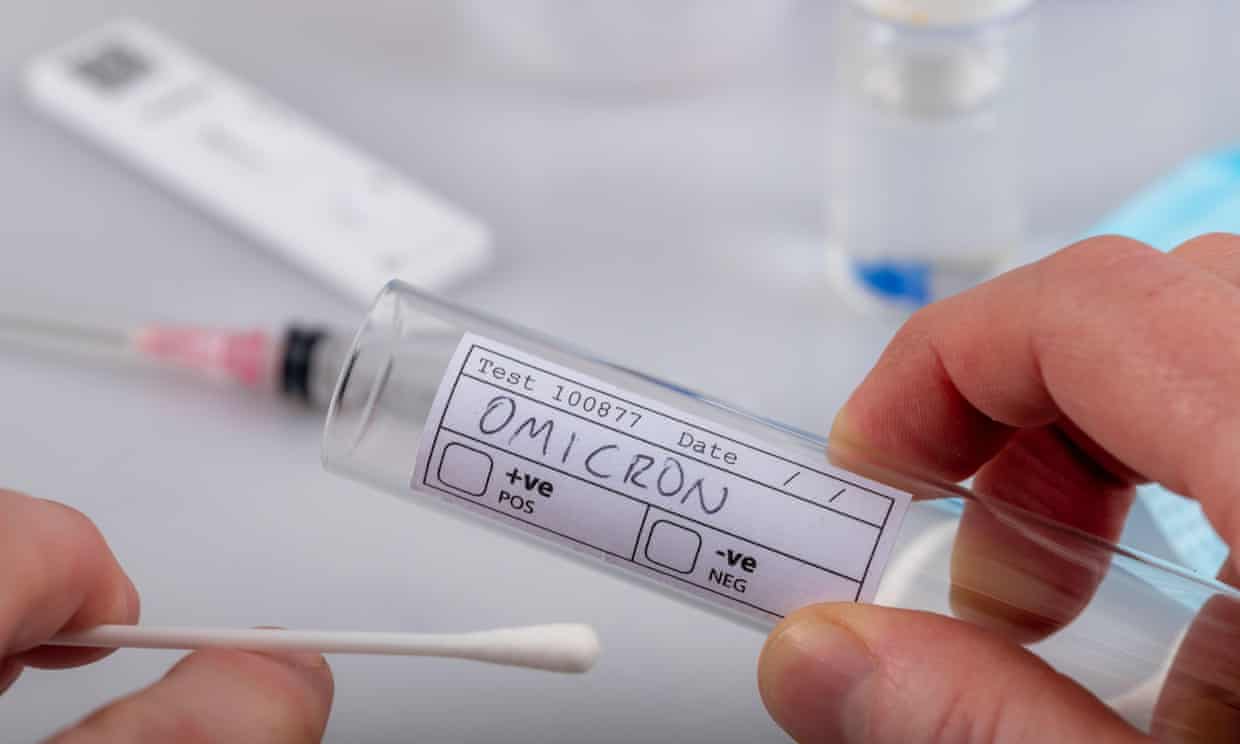Why is Omicron different and how does it affect the human body?
In late November, the Omicron variant of COVID-19, which experts say originated in South Africa, began to make headlines and sparked much anxiety across the globe. Although other variants have spawned over the course of the pandemic, none have been as contagious and transmissible as Omicron. But, do not fear; studying the science behind the Omicron variant can help to show how it behaves and how it will affect the course of the pandemic.

Spike proteins, which are found on the surface of the virus, are able to alter their shape so that the virus can latch on to human cells and infect the body (1). Spike proteins also tend to mutate over time in order to survive and be better fit for their environment. In areas with lower vaccination rates, viruses have a higher likelihood of mutating because people have less immunity and defense against the virus, thus the virus is able to spread at a faster rate. Furthermore, each time the virus latches on to another person and replicates, it is another opportunity for a mutation to occur – hence why places with lower vaccination rates are more likely to see a new variant. But not all mutations pose significant threats. Often the virus will mutate but will not gain enough traction to affect the course of the pandemic on a more global scale (2).
Previous variants such as Alpha, Gamma, and Delta, contain only 10, 12, and 9 spike protein mutations, respectively. Omicron has 36 mutations. One mutation in particular increases the virus’s ability to bind with ACE2, a human cell receptor. ACE2 is present in many organs including the heart and the lungs and is responsible for regulating the processes of ANG II, a protein that can kill cells in the alveoli when in the presence of COVID-19 (6). Moreover, as a result of the large number of mutations, Omicron is more capable of infecting those who have received the vaccine as compared to other variants (3).
:format(webp):no_upscale()/cdn.vox-cdn.com/uploads/chorus_asset/file/23120477/Screen_Shot_2021_12_22_at_12.10.20_PM.png)
However, a virus’ transmissibility does not necessarily correspond with its severity.
Data suggests Omicron is less likely to cause severe illness when compared with other variants and both hospitalizations and death rates have decreased. However, as of February 2nd, Hospital admissions rates are currently the highest they have ever been during the pandemic simply because so many people are getting infected with Omicron. Taison Bell, a critical care physician from the University of Virginia, compared Omicron to a hurricane and other variants to a tornado; “The tornado may cut a more destructive path with high-wind speeds, but the hurricane has a much bigger footprint” (4). Data shows that Omicron intensive care unit admission risk decreased by 26% and in-hospital mortality decreased 3% in comparison with the Delta surge (4). But that doesn’t mean individuals should lower their guard. Now more than ever, it is so important to continue being diligent by wearing masks, practicing good hygiene, and getting vaccinated to slow the spread of Omicron (3, 5).
Bibliography:
1. Hesman Saey, T. (2020, November 10). Explainer: What is a Spike Protein? Science News for Students. https://www.sciencenewsforstudents.org/article/explainer-what-is-a-spike-protein.
2. Bamford, C. (2020, December 22). What is the Spike Protein and Why Are Mutations On It Important? Global BioDefense. https://globalbiodefense.com/2020/12/22/what-is-the-spike-protein-and-why-are-mutations-on-it-important/.
3. Irfan, U. (2021, December 23). What Makes Omicron so Different and Dangerous from Other COVID-19 Variants. Vox Media. https://www.vox.com/22846696/omicron-covid-19-variant-virology-mutation-vaccine.
4. Stone, W. (2022, January 29). Omicron Symptoms Can Be Milder. Here’s Why Patients Are Still Flooding Hospitals. NPR. https://www.npr.org/sections/health-shots/2022/01/29/1075871661/omicron-symptoms-treatment-hospital.
5. Weintraub, K. (2021, December 21). Omicron Has Overtaken Delta in the US. But It’s Not All Bad News. USA Today. https://www.usatoday.com/story/news/health/2021/12/21/covid-omicron-not-march-2020/8967351002/.
6. Siriam, K., Insel, P., & Loomba, R. What is the ACE2 Receptor, How is it Connected to Coronavirus and Why Might it Be Key to Treating COVID-19? The Experts Explain. The Conversation. https://theconversation.com/what-is-the-ace2-receptor-how-is-it-connected-to-coronavirus-and-why-might-it-be-key-to-treating-covid-19-the-experts-explain-136928.







Comments are closed.